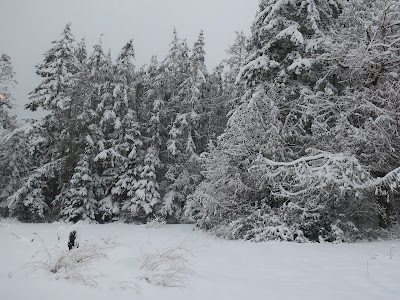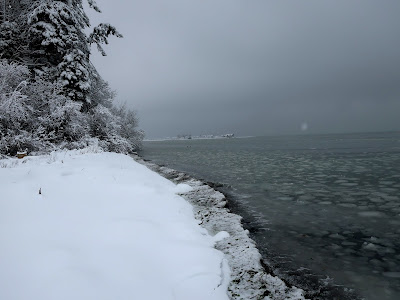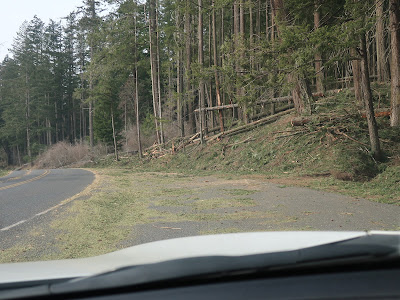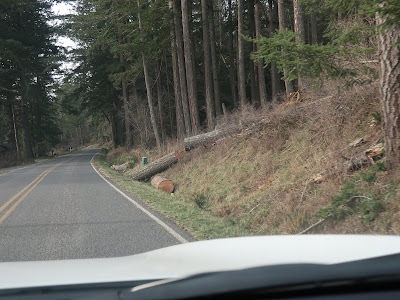East Sound is an embayment on the east side of Orcas Island. The sound is very much like a fjord. At the head of the sound are two bays separated by Madrona Point. The western bay, Fishing Bay, has a rocky shore and the town of Eastsound (note the words are combined for the town name) is located above the bay. The eastern bay is Ship Bay with a sand and gravel beach and, to the southeast, a steep bluff non bedrock bluff. Wind generated waves coming up the sound from the south erode the bluff. A road formerly was located along the bluff; however, shoreline erosion and bluff failures led to moving the road by the 1960s.
Pavement in not forever
Missing road section and view down the fjord-like East Sound
1941 aerial (USGS) of road along the bluff
Erosion is continuing




























